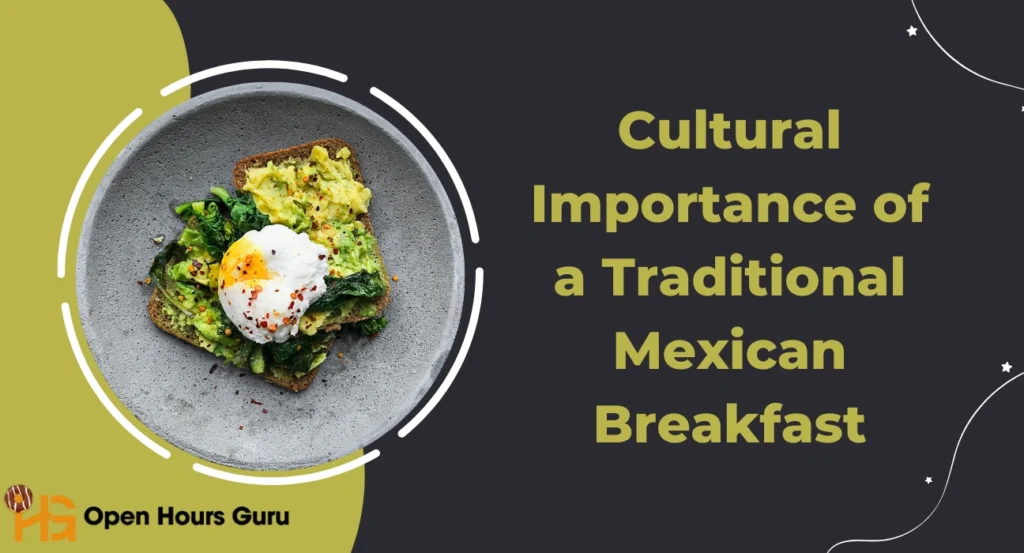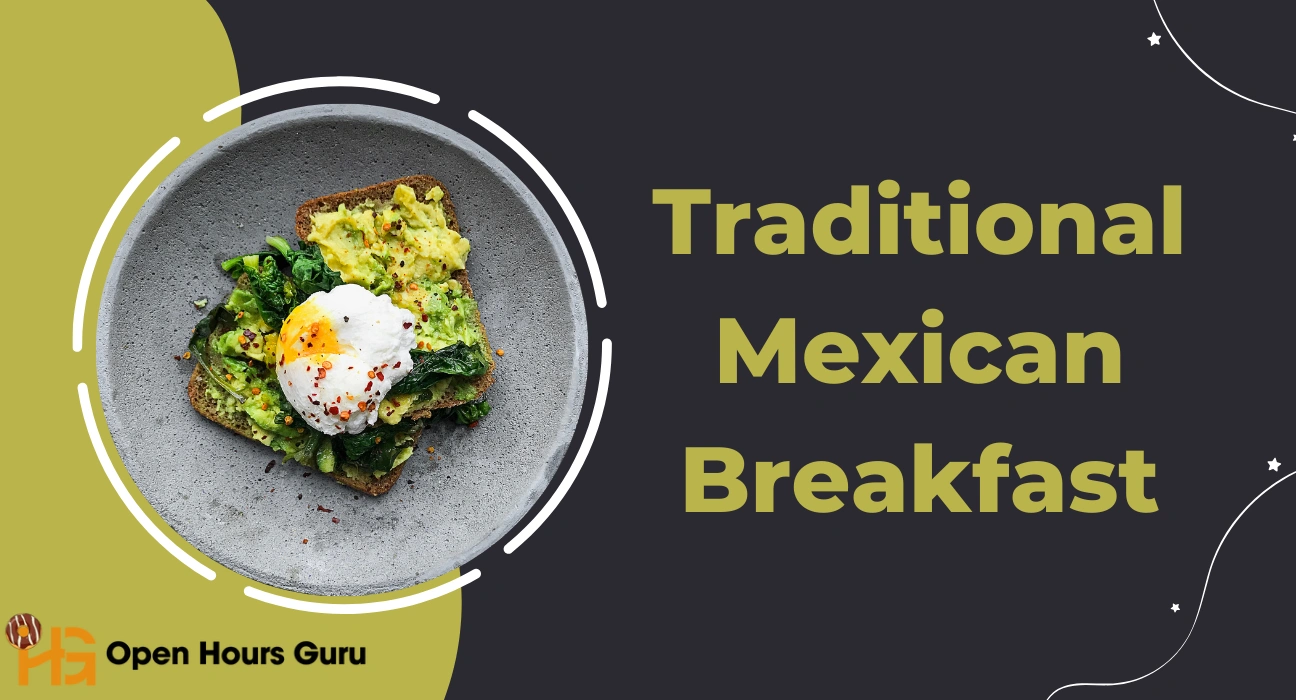Traditional Mexican Breakfast: Savor the Authentic Tastes
A traditional Mexican breakfast is more than just a morning meal. Mexicans treat breakfast as a cultural experience filled with flavor, color, and tradition. They often prepare hearty dishes to keep full through the morning. Unlike light Western breakfasts, a traditional Mexican breakfast usually includes warm and savory items. These meals reflect Mexico’s rich food heritage that blends indigenous and Spanish influences.
Roots of a Traditional Mexican Breakfast
Mexico has a diverse culinary history, and breakfast is no exception. Corn, beans, and chilies are staples that date back to the Aztec and Mayan civilizations. When the Spanish arrived, they introduced eggs, dairy, and meats, which soon became part of everyday cooking. Over time, these ingredients shaped what we now recognize as a traditional Mexican breakfast.
This type of breakfast is also region-specific. While some parts of Mexico prefer tamales and atole, others enjoy huevos rancheros and chilaquiles. The dishes are as varied as the country itself, and each one tells a story of local customs and family traditions.
Also Read: Open Hours Guru
Popular Dishes in a Traditional Mexican Breakfast
One of the most iconic meals is chilaquiles. Cooks make this dish with crispy corn tortillas soaked in red or green salsa. They top the tortillas with cheese, crema, onions, and often a fried egg or shredded chicken. Chilaquiles are comforting and full of texture, offering a mix of soft and crunchy bites.
Huevos rancheros are another staple. This dish includes fried eggs placed on warm corn tortillas and topped with tomato-chili sauce. Often served with beans and rice, huevos rancheros are both simple and satisfying. They bring together the earthiness of beans and the brightness of fresh salsa.
A traditional Mexican breakfast also includes molletes. These are sliced bolillo rolls topped with refried beans and melted cheese. When served with pico de gallo salsa, molletes become a well-balanced mix of carbs, protein, and fresh vegetables.
Some people prefer scrambled eggs with tomatoes, onions, and chili peppers. Known as huevos a la Mexicana, this dish gets its name from the ingredients that reflect the colors of the Mexican flag. It is one of the easiest and fastest options, often made on busy mornings.
Breads and Drinks in a Traditional Mexican Breakfast
No traditional Mexican breakfast is complete without pan dulce. These sweet breads come in many shapes and flavors, including conchas and empanadas. They are often enjoyed with hot drinks, creating a delightful contrast between sweet and savory.
Mexican hot chocolate is a common morning beverage. Made with cinnamon and sometimes chili, it is thicker and richer than its American version. Atole, a warm drink made from corn masa, sugar, and cinnamon, is another breakfast favorite. Its chocolate version, champurrado, is particularly popular during colder months.
Weekend Specials and Festive Additions
Weekends often bring more elaborate dishes to the table. Families usually serve menudo and pozole, two hearty soups, for breakfast on Sundays or during celebrations. Cooks prepare menudo with beef tripe and red chili, while they make pozole with hominy and pork. They top these soups with oregano, onions, lime, and crushed chili flakes.
Tamales also play a key role in traditional Mexican breakfast meals. Made with masa and filled with meats, cheese, or chilies, tamales are wrapped in corn husks and steamed. They are time-consuming to make but offer rich flavor and comfort.
Traditional Mexican Breakfast Table
| Dish Name | Main Ingredients | Common Pairings | Region Popularity |
| Chilaquiles | Tortilla chips, salsa, cheese, crema | Fried eggs, beans | Nationwide |
| Huevos Rancheros | Fried eggs, tortillas, tomato-chili sauce | Rice, beans | Central & Northern Mexico |
| Molletes | Bolillo, refried beans, cheese | Pico de gallo | Central Mexico |
| Tamales | Masa, meat or cheese, corn husk | Atole, hot chocolate | Throughout Mexico |
| Pan Dulce | Sweet dough, sugar toppings | Hot chocolate, coffee | Nationwide |
| Menudo | Beef tripe, red chili broth | Lime, onion, oregano | Northern Mexico |
Cultural Importance of a Traditional Mexican Breakfast

The traditional Mexican breakfast is not just about eating; it is also a way of connecting with family and culture. Morning meals often bring families together before a busy day begins. In many homes, breakfast is the most important meal, both nutritionally and emotionally. Elders pass down recipes and techniques, ensuring that traditions live on through generations.
In Mexican towns and cities, you can find street vendors serving tamales and atole to early risers. Local markets buzz with activity as people gather ingredients for their morning meals. Restaurants open early to serve dishes that reflect home-style cooking. This communal aspect adds to the emotional connection many people have with traditional breakfast foods.
Health and Nutrition in a Traditional Mexican Breakfast
Despite being rich and flavorful, a traditional breakfast can also be nutritious. Beans provide protein and fiber, while corn tortillas offer whole grain carbs. Eggs contribute essential vitamins and healthy fats. When paired with fresh vegetables like onions, tomatoes, and avocados, these meals offer a balanced diet.
However, like any cuisine, moderation is key. Some dishes can be high in calories or fat, especially if they include fried elements. But with mindful preparation, a traditional Mexican breakfast can support a healthy lifestyle.
Also Read: Britannia 50-50 Biscuit
Variations and Modern Twists on Traditional Breakfast
Modern cooking has introduced creative takes on traditional dishes. For example, baked chilaquiles are now popular for those avoiding fried foods. Vegan versions of huevos rancheros use tofu instead of eggs. Even tamales have evolved, with new fillings like mushrooms and vegan cheese.
Many urban cafes now offer fusion breakfasts that blend Mexican flavors with global cuisines. Avocado toast with chipotle or breakfast burritos with quinoa are just some examples. These changes show how traditional Mexican breakfast foods continue to inspire new generations.
Why Traditional Mexican Breakfast Is Loved Worldwide
Thanks to its bold flavors and variety, the traditional Mexican breakfast has gained international appeal. Many U.S. restaurants now offer dishes like chilaquiles and huevos rancheros on their morning menus. Food bloggers and chefs across the globe are also embracing these recipes.
This global love is fueled by the internet, travel, and cultural exchange. As people become more curious about different cuisines, they discover the richness of a traditional Mexican breakfast. It is not only delicious but also a doorway into Mexican heritage and community life.
Frequently Asked Questions
What is a traditional Mexican breakfast?
A traditional breakfast includes hearty dishes like chilaquiles, huevos rancheros, and tamales. It often features beans, tortillas, eggs, and salsa.
What drinks are served with a traditional Mexcan breakfast?
Common drinks include atole, champurrado, Mexican hot chocolate, and café de olla (spiced coffee). These are usually paired with sweet bread or tamales.
Is traditional breakfast healthy?
Yes, many dishes are rich in protein, fiber, and fresh vegetables. However, fried foods and heavy toppings should be eaten in moderation.
What bread is commonly eaten for breakfast in Mexico?
Pan dulce (sweet bread) is very popular. People often serve varieties like conchas and empanadas with coffee or hot chocolate in the morning.
Conclusion
A traditional Mexican breakfast is a celebration of flavor, culture, and family. It goes beyond food and becomes a symbol of Mexican identity and warmth. From chilaquiles to tamales, each dish holds stories passed down through time. With its rich history and variety, this breakfast style appeals to people of all ages.
Whether you are enjoying a simple mollete or a bowl of pozole, you are tasting generations of tradition. The traditional breakfast will always remain a beloved part of the country’s culinary landscape. Its hearty, flavorful nature continues to bring people together around the world.







